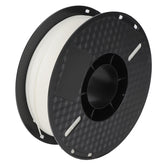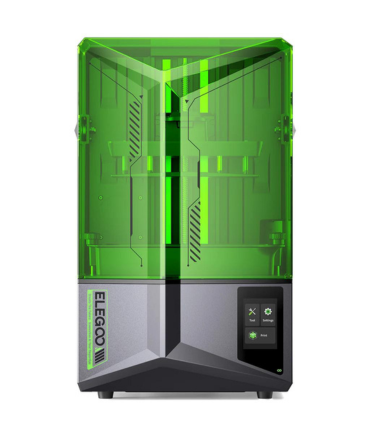PLA vs. ABS Filament: A Detailed Comparison
Choosing the right filament is essential for achieving the best results in 3D printing. Among the most popular materials are PLA and ABS. Each has its unique properties, advantages, and disadvantages. Here’s a comprehensive comparison to help you decide which filament is best for your projects.
Composition and Properties
PLA (Polylactic Acid): PLA is a biodegradable thermoplastic made from renewable resources like corn starch or sugarcane. It's known for its ease of use, minimal odor during printing, and low warping. PLA is perfect for beginners and is widely used for creating decorative items, prototypes, and educational projects.
ABS (Acrylonitrile Butadiene Styrene): ABS is a petroleum-based thermoplastic. It is known for its toughness, impact resistance, and higher temperature resistance compared to PLA. ABS is commonly used for functional parts, automotive components, and products requiring high durability.
Ease of Printing
PLA: PLA prints at lower temperatures (around 180-220°C) and does not necessarily require a heated bed, although using one can improve adhesion. It has low shrinkage and warping, making it ideal for beginners.
ABS: ABS prints at higher temperatures (around 220-250°C) and requires a heated bed (90-110°C) to prevent warping and cracking. It also emits a strong odor, so good ventilation is recommended during printing. Fine-tuning settings like bed temperature and enclosure are essential to achieve optimal results.
Strength and Durability
PLA: While PLA is easy to print, it is more brittle than ABS and may not be suitable for parts that will undergo significant stress or high temperatures (above 60°C).
ABS: ABS is stronger and more flexible than PLA, making it better suited for mechanical parts, enclosures, and products that need to withstand higher temperatures and physical stress.
Finish and Appearance
PLA: PLA filaments come in a wide range of colors and finishes, including matte, glossy, and translucent. The surface finish of PLA prints is generally smooth, making it ideal for aesthetic projects.
ABS: ABS can be post-processed easily using acetone vapor to achieve a smooth, glossy finish. However, it tends to have a more matte and rough surface right off the printer compared to PLA.
Environmental Impact
PLA: PLA is biodegradable and made from renewable resources, which makes it an eco-friendly option. However, its production still involves industrial processes, which have their own environmental impact.
ABS: ABS is not biodegradable and is derived from petroleum-based resources, making it less environmentally friendly. However, it is recyclable under certain conditions.
Cost
PLA: PLA is generally more affordable and widely available. Its ease of printing and versatility make it a cost-effective choice for many projects.
ABS: ABS tends to be slightly more expensive than PLA, primarily due to its enhanced properties. The cost is justified by its higher strength, durability, and versatility.
Conclusion
Both PLA and ABS have their strengths and are suitable for different types of projects. PLA is ideal for beginners, decorative items, and projects that don’t require high durability. ABS, on the other hand, is perfect for functional parts, mechanical components, and applications where strength and heat resistance are crucial. Understanding their properties will help you make an informed decision and achieve the best results in your 3D printing endeavors.










